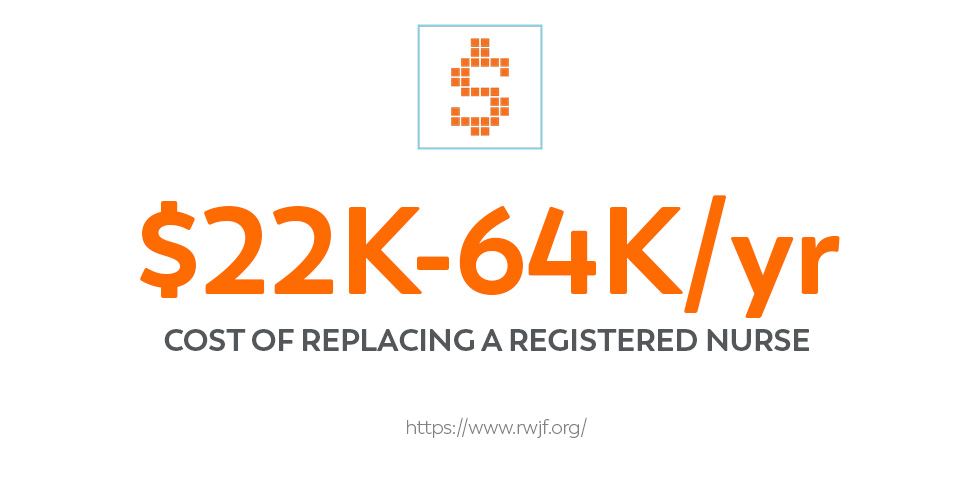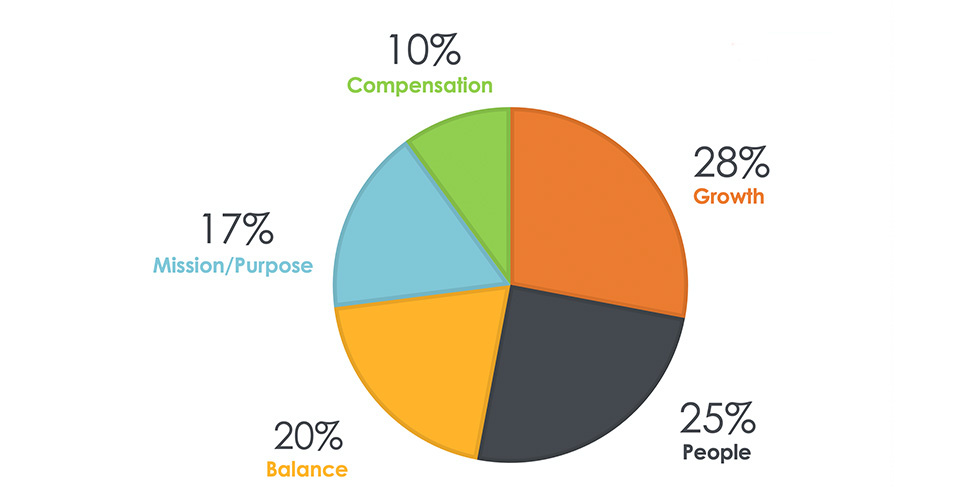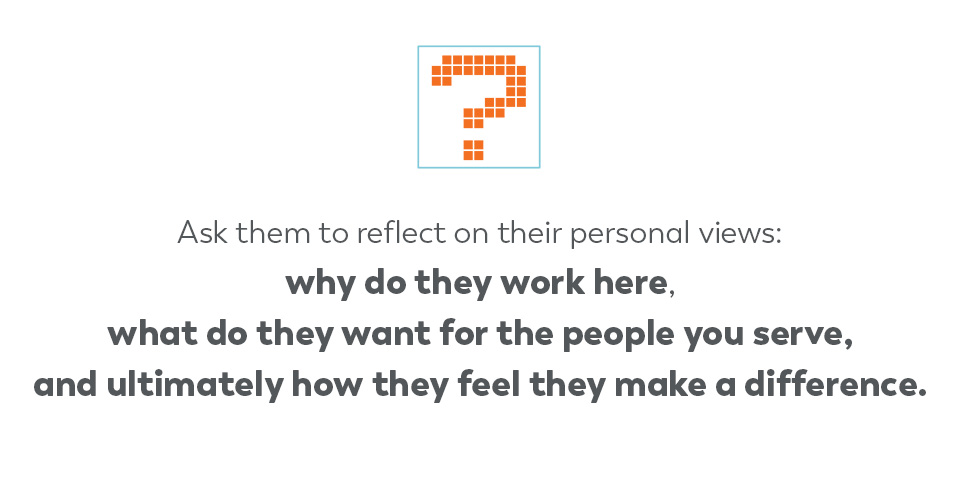Curbing Senior Care Turnover with Purpose
An inside-out branding approach reduces turnover, engages your team, and fosters a better patient experience
Workforce recruitment and retention remains one of the most significant and pressing challenges facing all sectors of senior care. Providers in the space face some of the nation’s highest turnover rates compared to other industries, with averages spanning from 50% to more than 120%.
This isn’t only disruptive, it’s also extremely expensive. Many factors come together to create the true cost of turnover. For instance, some estimates place the cost of replacing a registered nurse as ranging from $22,000 to $64,000 a year, factoring in things like payment for unused vacation time, costs of substituting unfilled positions through overtime payments or temporary hires, advertising and recruiting costs, interviewing, background checks, new staff training and orientation costs. It adds up.

Beyond that, shifting caseloads impact continuity of care and potentially increase risk for mistakes – not to mention exacerbating dissatisfaction of remaining staff who can end up overworked and burnt out to compensate for the departure of their colleagues.
On the recruitment side, an ongoing shortage of professional caregivers has created huge competition for staff. A challenge expected to intensify amid an ever-looming caregiver crisis. By 2030, there will be a national shortage of 151,000 paid direct care workers, according to Reuters. By 2040, that shortage of paid care workers will increase to 355,000.
The increasing risk turnover poses to the health of senior care agencies – the well-being of its patients, staff and bottom line – cannot be overstated. And any deficiencies in an agency’s retention and recruitment capabilities today will only be magnified in coming years as caregiver demand booms.
What Keeps Employees from Leaving
When your current and prospective employees have an increasing range of choices other than you, how do you stand out? While good compensation and benefits (PTO flexibility, travel reimbursement, 401k matching) certainly form the baseline, there’s a lot more employees are looking for – especially the highest quality, most motivated ones.
In fact, according to data from Harvard Business Review and Home Health News, the factors of growth potential, coworkers, work balance and the organization’s mission and purpose all come before compensation in terms of what keeps employees or drives them away. It shows employees highly value their personal connection with an employer – seeking one rich with opportunity, respect and meaning – beyond a good paycheck alone.

Your Brand Is for Employees, Too
As competition continues to intensify for qualified professional caregivers, it’s more important than ever to establish a strong “employee brand.” In fact, the way you brand to employees and recruits should be done with just as much intensity as you do to prospective patients and their families.
The term “brand” in general is met with vastly different interpretations. It’s often misunderstood just how helpful and even essential it is to forming an organization’s relationship with its own team. That’s because the best brands are built on a core sense of purpose. This foundational purpose is what separates shallow, “just a pretty logo and words” brands from the deeply compelling ones built on meaningful aspiration to somehow make the world better.
To clarify, a purpose runs deeper and is much more timeless than a mission statement. In contrast to a mission, which defines what you do and for whom, a purpose digs deeper into the “why” that drives you. A thoughtfully defined and implemented purpose can powerfully align your culture and internal communication with external marketing efforts and even service model evolution – creating a cohesive identity that helps focus every aspect of your business.
Creating a purpose that is easy for staff to understand and live by also supports a more engaged team. It allows employees to arrive at work with a clear sense of how to make decisions and what is valued most. That can make them more productive, more fulfilled and less siloed from other parts of the organization.
In a field as physically exhausting and emotionally intense as senior care, this sense of shared purpose is all the more important to reducing burnout and turnover. It can inspire employees in the good days and guide or even comfort them in the tough ones. This clarity may also contribute to a more cohesive management team, further improving the team’s ability to work together toward common goals. Likewise, having a strong and defined purpose can dramatically enhance your appeal to the most talented prospective caregivers and should be leveraged in recruitment efforts.
Defining Your Purpose Isn’t Easy. Let Your Team Help.
If you haven’t done so yet, now is the time to define your purpose. Nailing it down and putting it on paper, however, can seem a bit daunting. There might be differing perspectives across stakeholders, and it must resonate with both internal and external audiences. It needs to tap into your organization’s “superpower” to support powerful outward differentiation in your marketing and align to business strategy, while remaining true and authentic to your culture so it is accepted and embodied by your team.
There is no simple formula for arriving at your purpose statement, but you don’t have to go it alone. Start by tapping the breadth of perspectives on your own team. Involve employees at all levels of your organization to get the richest diversity of insights. Have your team consider and discuss your audiences, what you do (and do better than anyone else in the area), and why patients and families choose you. Also ask them to reflect on their personal views: why do they work here, what do they want for the people you serve, and ultimately how they feel they make a difference.

Bring Your Purpose to Life Daily within the Organization
Once you’ve done the hard work of unearthing and defining your purpose, make use of it. Don’t let it get tucked away in a document; bring it into the everyday operations of the organization as a constant and potent reminder of why you’re all here.
Your purpose statement serves as the compass to lead and grow your organization. Connect your goals and objectives to it, and routinely reinforce with your staff how your purpose is realized through their day-to-day efforts to care for your patients and their families.
Help employees see their role in bringing the purpose to life even more by inviting them to help solve problems rather than dictating solutions, and keep them in the loop by communicating news to employees first before sharing it publicly.
To gauge impact of, consider periodically taking the pulse on your staff with brief surveys that evaluate their buy-in of your purpose and awareness of their role in achieving objectives.
Finally, look for ways to reinforce your purpose by recognizing employees who exemplify it. Recognition doesn’t have to be elaborate. Simple, genuine feedback on a job well done or relaying words of appreciation from patients and families are great and simple ways to remind staff why they do what they do.
To retain staff and stand apart from other employers in an increasingly competitive climate, it’s crucial agencies provide the most fulfilling career opportunities and inspiring culture. Creating clarity of purpose and bringing it to life in your culture, operations and communications will go a long way to better engaging your team and making your agency the area’s employer of choice.










